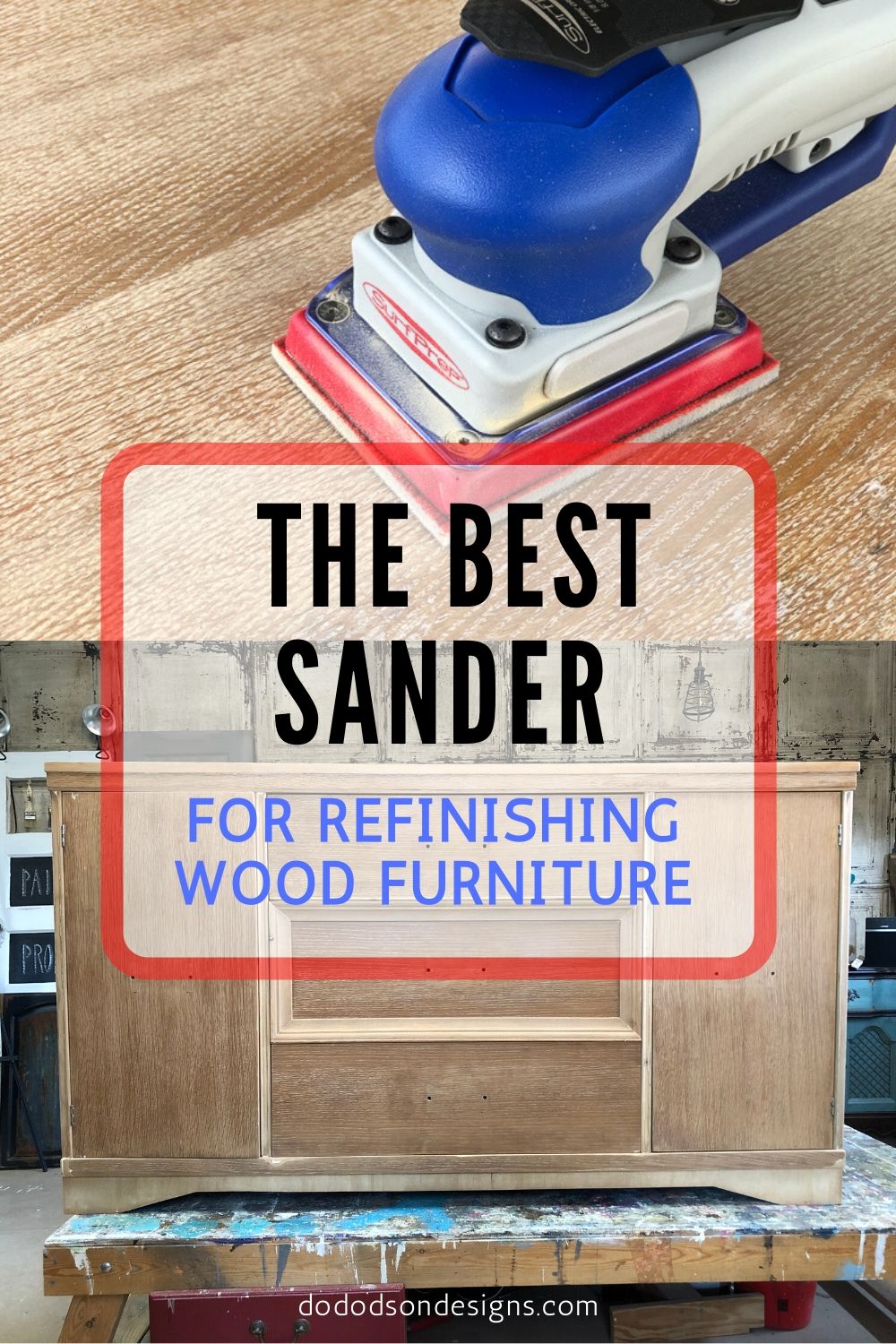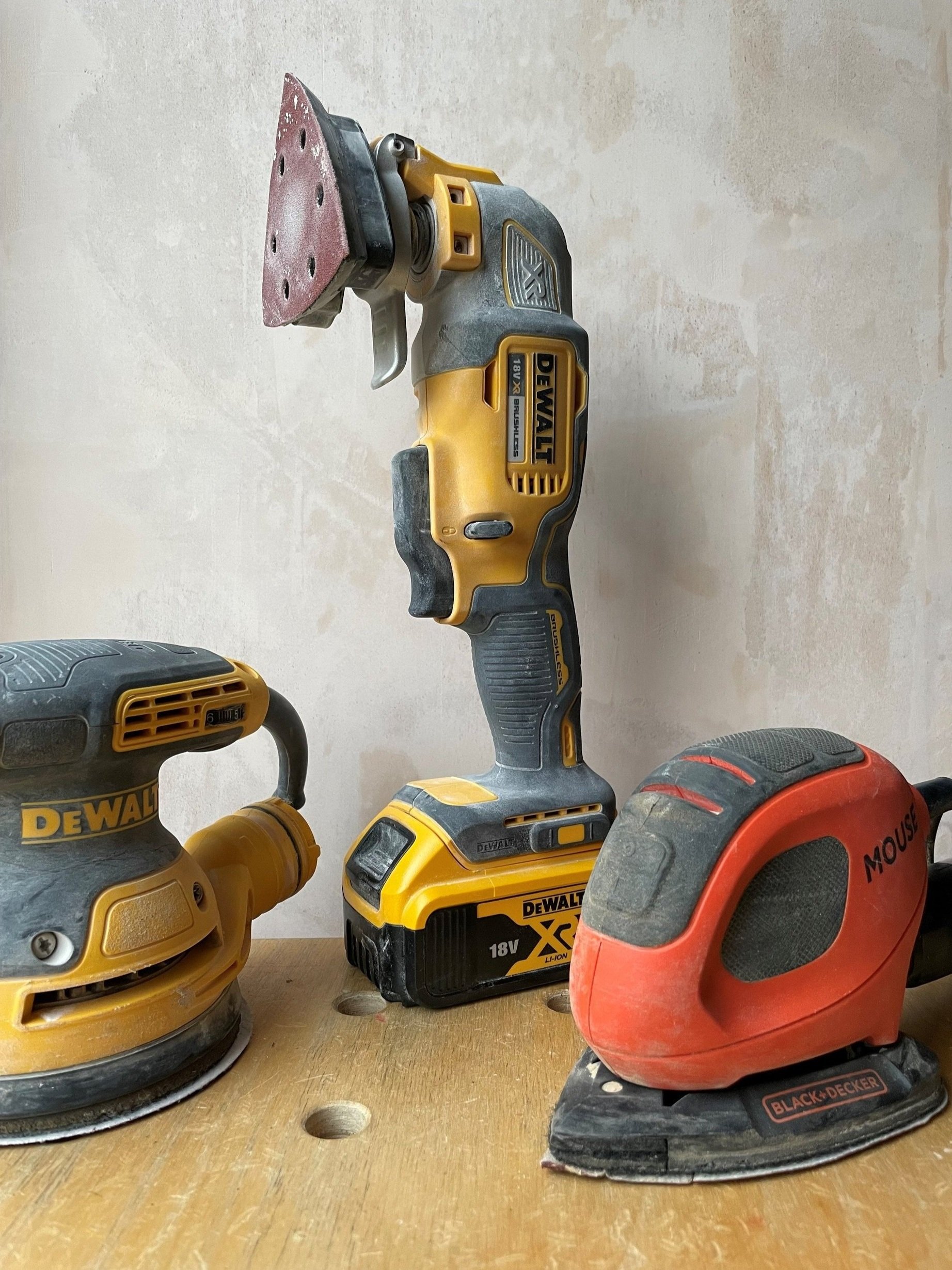Have you been contemplating refurbishing your beloved furniture pieces but aren't quite sure which sander to use? Refinishing furniture can breathe new life into your home’s decor, making old pieces look fresh and vibrant again. Yet, choosing the right tool for the job is crucial, especially given the variety of sanders available on the market. So, what is the best sander for furniture in the UK?
Understanding Different Types of Sanders
Before you make a purchase, it’s essential to understand the various types of sanders available and their specific purposes. Each type of sander has its strengths and weaknesses, making some better suited for particular tasks than others.
Belt Sanders
Belt sanders are known for their aggressive material removal capabilities. They're perfect for large, flat surfaces where a lot of material needs to be removed quickly. These sanders use a loop of sandpaper that moves continuously around a pair of drums.
Pros:
- Rapid material removal
- Suitable for big, flat surfaces
Cons:
- Can be too aggressive for delicate work
- Difficult to control on smaller surfaces
Orbital Sanders
Orbital sanders are more gentle and versatile, making them suitable for a variety of sanding tasks. They utilize a square or rectangular sanding pad that moves in small orbits.
Pros:
- Gentle on surfaces
- Versatile and easy to control
Cons:
- Slower material removal
- Pad can leave swirl marks
Random-Orbit Sanders
Combining the aggressiveness of a belt sander with the gentleness of an orbital sander, random-orbit sanders are excellent all-rounders. They feature a circular pad that moves in random orbits, which reduces the risk of leaving swirl marks.
Pros:
- Versatile and balanced performance
- Minimal swirl marks
Cons:
- More expensive than other types
- Not ideal for tight corners
Detail Sanders
Detail sanders are designed for intricate work, featuring a small, triangular sanding pad that can reach into tight corners and detailed areas. They are ideal for furniture with intricate designs and hard-to-reach spots.
Pros:
- Perfect for intricate and detailed work
- Can reach tight corners
Cons:
- Not suitable for large surfaces
- Limited material removal

This image is property of dododsondesigns.com.
Key Features to Consider
When choosing the best sander for furniture, several key features are worth considering to ensure you make the right choice for your needs.
Power and Speed
Sanders come with various power ratings and speed settings. Higher power allows for more aggressive sanding, whereas adjustable speed settings offer versatility for different tasks.
Dust Collection
A good dust collection system is crucial for keeping your workspace clean and reducing health risks associated with inhaling dust. Look for sanders with built-in dust bags or vacuum attachment options.
Ergonomics
Sanding can be a time-consuming task, so it’s essential to choose a sander that feels comfortable in your hand. Ergonomic designs with soft grips can make a significant difference in reducing fatigue.
Weight
The weight of the sander can impact its usability. Lighter sanders are easier to maneuver, making them ideal for detailed work, whereas heavier sanders might be better for large, flat surfaces.
Pad Size and Shape
Consider the shape and size of the sanding pad. Larger pads cover more area and reduce sanding time, while smaller, uniquely-shaped pads can reach intricate areas more easily.
This image is property of images.squarespace-cdn.com.
Top Sanders for Furniture in the UK
Here’s a table summarizing the top sanders available in the UK, focusing on their unique attributes and suitability for different furniture sanding tasks:
| Sander | Type | Best For | Key Features | Price Range |
|---|---|---|---|---|
| Makita 9403 | Belt Sander | Large, flat surfaces | Quiet operation, efficient dust collection | £180 - £220 |
| Bosch PSM 100 A | Multi-Sander (Detail) | Detailed, intricate work | Compact, ergonomic design, microfilter system | £40 - £60 |
| DeWalt DWE6423 | Random-Orbit Sander | Versatility, minimal swirl marks | Variable speed control, high dust collection efficiency | £80 - £120 |
| Black+Decker KA161BC-GB | Mouse Detail Sander | Small, intricate areas | Finger attachment for tight corners, lightweight | £30 - £50 |
| Festool RO 150 FEQ-Plus | Dual-Mode Sander | Versatility and precision | Dual-mode sanding (aggressive & fine), exceptional dust extraction | £400 - £500 |

This image is property of arayofsunlight.com.
In-Depth Reviews
Makita 9403 Belt Sander
The Makita 9403 is a powerhouse, designed to remove large quantities of material in no time. This belt sander operates quietly compared to its competitors, making it more pleasant to use for extended periods. Its noise level is one of the lowest in its class at 84dB.
Notable Features:
- Wide 4-inch belt for efficient sanding
- Powerful 11-amp motor
- Efficient dust collection system
- Labyrinth construction to protect internal components
Why Choose This? If you’re working on large furniture with extensive flat surfaces, the Makita 9403 is your go-to option. It's efficient and robust, but be wary of using it on delicate surfaces.
Bosch PSM 100 A Multi-Sander
Bosch's PSM 100 A is a detailed work wizard. Its compact size and ergonomic design make it easy to handle, perfect for getting into those tight spots and intricate details often found on furniture pieces.
Notable Features:
- Micro-filter system for efficient dust collection
- Lightweight and easy to handle
- Versatile design for multiple sanding applications
- SDS system for easy paper changes
Why Choose This? For fine detail work and areas where precision is key, the Bosch PSM 100 A excels. Its small stature makes it ideal for delicate jobs.
DeWalt DWE6423 Random-Orbit Sander
The DeWalt DWE6423 offers a balanced blend of power and finesse, providing excellent versatility. This model is well-known for its high dust collection efficiency, making it a favorite among DIY enthusiasts and professionals alike.
Notable Features:
- Variable speed control for different tasks
- High dust collection efficiency
- 3.0-amp motor for robust performance
- Low-vibration design for user comfort
Why Choose This? When you need a versatile sander that can handle both aggressive and fine sanding while keeping your workspace clean, the DeWalt DWE6423 stands out.
Black+Decker KA161BC-GB Mouse Detail Sander
The Black+Decker KA161BC-GB is specifically designed for detail work. Its unique “mouse” shape allows it to get into corners and other tight spaces easily. It also includes a finger attachment for even more precision.
Notable Features:
- Finger attachment for ultra-fine detailing
- Lightweight and ergonomic design
- Powerful motor for its size
- Compact and maneuverable
Why Choose This? For detailed work such as getting into intricate corners and edges, the Black+Decker Mouse Detail Sander is unparalleled. It offers precision unmatched by larger models.
Festool RO 150 FEQ-Plus Dual-Mode Sander
Festool's RO 150 FEQ-Plus is a premium option with incredible versatility. Its dual-mode functionality lets you switch between coarse and fine sanding modes quickly. Though pricey, it offers exceptional performance and durability.
Notable Features:
- Dual-mode sanding capabilities
- Efficient dust extraction
- Durable and robust construction
- FastFix tool-less pad change
Why Choose This? If budget isn’t a concern and you need a versatile, high-performance sander, the Festool RO 150 FEQ-Plus is worth every penny. Its dual-mode offers unmatched flexibility for various sanding tasks.

This image is property of www.dododsondesigns.com.
Tips for Sanding Furniture
Choosing the right sander is only the first step to achieving a beautifully sanded piece of furniture. Here are some tips to get the best results:
Selecting the Right Sandpaper
Sandpaper comes in various grits, each suited for different stages of sanding:
- Coarse (40-60 grit): For heavy material removal
- Medium (80-120 grit): For general sanding
- Fine (150-220 grit): For final smoothing
- Extra Fine (320+ grit): For finishing touches
Sanding Technique
Always start with a coarser grit and work your way to finer grits. Use steady, even pressure, and let the sander do the work. Don't force it, as this can lead to uneven sanding and damage to your material.
Safety Precautions
Sanding can produce a lot of dust, which can be harmful if inhaled. Make sure to wear a mask and safety glasses. Additionally, work in a well-ventilated area to minimize dust accumulation.
Care for Your Sander
Regular maintenance ensures your sander performs optimally for a longer period. Clean the dust collection system frequently and check for wear and tear on the sanding pad and sandpaper.

This image is property of i.ytimg.com.
Conclusion
Choosing the best sander for furniture in the UK involves understanding the different types available and considering key features that match your needs. Whether you are tackling large, flat surfaces or intricate details, there is a perfect sander out there for you. Equipping yourself with the right tool and following proper sanding techniques will ensure your furniture pieces turn out splendidly. Happy sanding!










